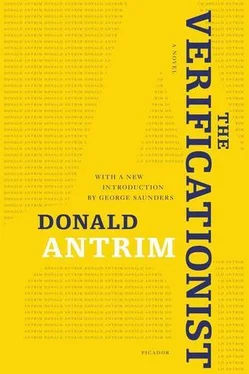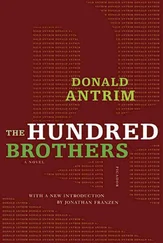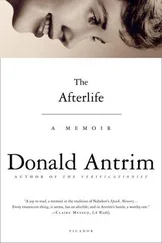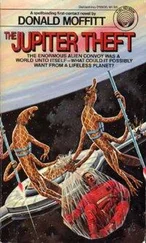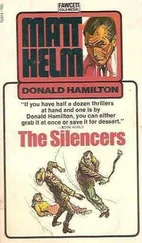This simple arc is embellished with a complex system of patterning that includes, but is not limited to: doublings; posture morphing/mimicry; a succession of psychosexual paradigms; and distortions both spatial and temporal.
This makes for a dense, cross-firing, wildly allusive fictional world. It is an absurdist-comic world, and the story ends, as the absurdist-comic must (imagine all of those Marx Brothers tumbling out of that stateroom): it escalates, escalates, then explodes.
SUDDENLY MUCH IS OCCURRING ALL AT ONCE
Antrim has rigged the narrative so that the impossible activity is both undeniably happening (we are seeing it and believing in it) and is also, per Tom, not happening (i.e., is the result of a hallucination or breakdown of some kind). Toward the end of the book, even as the impossible activity continues to both happen and not happen, Antrim ups the ante by causing Tom to have a projective fantasy of escape from the Pancake House, a fantasy that soon, forced by the dexterity of Antrim’s narrative voice, will come to seem real to us (i.e., we will forget that it is a fantasy). Then, within that projective fantasy, there occurs another, in which Tom imagines himself confessing the events of the evening to Jane. In this way, several (six? nine? twelve?) viable narrative realities are felt to exist at once. (Tom, while either engaged in the impossible activity or hallucinating it, is both escaping the Pancake House and not escaping it and, in either case, is either confessing it to Jane, or vividly imagining confessing it to Jane, who is either on her way to the Pancake House to rescue Tom, or waiting at home for the man who either is, or is not, her lover.) The effect is of watching an immense multideck cruise ship approach a harbor that is not quite ready for it, as, on each of those decks, some complicated version of the novel’s central question (i.e., Will Tom grow up? ) plays out. It is a bravura performance that, at least in this reader, induces a state of luminous giddiness, in which the reader abandons logic and submits to bliss — the reading equivalent of throwing off one’s clothes and jumping in the pool, even if there is a thunderstorm coming and you’re supposed to be on jury duty.
The reader, in other words, is all in .
Antrim wins.
Art wins.
I’M SICK, BUT NOT THAT SICK, OR AM I?
In fact, what that cruise ship is approaching is not a harbor but a hospital.
That hospital (pyramid-shaped, modern but ancient) stealthily comes to dominate the book. Several lyrical descriptions of the book’s sweet college town conclude (as does the book itself) at this hospital. At one point, Tom compares it to a spaceship, and indeed it gets bigger, closer, and more ominous as the night and the book progress. He also describes it as a temple, a holy resting place, a tomb. The stakes, it would seem, are high for Tom: grow up or crack up. One of the student-analysts takes a stab at explaining what’s happening to Tom (as he continues to engage in the impossible activity ) that segues into a prediction of Tom’s possible fate: “Psychotic break with sudden onset of schizophrenic episodes, uh, possibly hostile behavior leading to a gradual dissolution of coherent identity, necessitating antipsychotic medicalization and … let’s see … lifelong hospitalization?”
“A basic repudiation of socially binding mores and conventions, including the marriage contract?” predicts another student.
“Watch and learn,” advises their teacher, and they do, and so do we.
Near the end of his hero’s journey, in what I take as a hopeful sign, on the very brink (maybe) of the much-desired affair with the teenaged waitress, Tom takes what might be a tentative first step into adulthood: he self-sabotages by committing that well-known sexual buzzkiller, i.e., mentioning the fact that one feels one is surrounded by spooky ghosts having sex.
In this way, sex-with-the-teenaged-waitress is averted. But the hospital is not. What happens at the hospital, and after, is the beautiful mystery with which the book ends. Tom wonders: “Would Jane, finding me naked on a metal bed on a cold ward … crawl into the bed and hold me … telling me that, after all, we are married, and she doesn’t mind?”
In a way, we hope so. In a way, we hope not. We hope Jane, ever patient so far, remains ever patient. On the other hand, we hope Jane will call Tom’s bluff. Me, I am a little alarmed that, even at this late juncture, Tom’s pose is still passive, with a hint of self-pity, and positions Jane, still, as a sort of homey shock absorber.
But who knows? This is, after all, a book in which an impossible activity has been sustained for more than a hundred pages and borne amazing fruit.
In it, and beyond it, we now feel, anything can happen.
YEAH, OKAY, BUT WHAT’S THE TAKEAWAY?
Antrim belongs to that highest order of writer, for whom style and content are inseparable, who lives to make that specialized form of beauty that results when language instantaneously begets event — who knows that before a book can be anything at all — before it can convey theme or critique ideas or limn identity —it has to be magical, and convince us, and the principle ingredient of said magic is language.
You will find this book to be full of diverse forms of magnificent language: sly, celebratory, compressed, ecstatic, sprawling. You will also find it funny —in a very specific, droll flavor that no one else does as well as Antrim and that has the authority, humility, simplicity, and inevitability of truly great comic writing.
You will also find an invigorating dearth of detectable authorial agenda. We feel the book as a bold, confident expression of energy, but when we look for some sort of simple intentionality behind that energy, we will be pleasantly rebuffed. In lesser stories, authorial intention is (too) easily identified. Writer A is trying to let you know that she once hitchhiked across Rwanda. Writer B is making an urgent point about the role of social media in the decay of the modern American family. Even in more experimental stories, we often sniff authorial intent: the mechanical elephant who comes to life and is very strict and mean and against abortion? That would be the Republican Party . The man sprouting horns is (ugh) doing so because his wife is cheating on him . And so on.
But in the best fiction, authorial intent gets lost or repurposed by the actual energy of the book. Method be damned, agenda be damned, the story starts constructing itself, following the rules of joy, seeking after its own natural energy and best self, giving off meaning of the highest kind: irreducible, blessedly complex, agenda-free, ecstatic. We enjoy the strange pleasure of observing someone losing himself in the creative act. This is thrilling to watch. Why should this be so? Somehow, it gives us hope to see one of our fellows inventing a parallel world with such confidence and, well … love. Because — surface irony and dark wit notwithstanding — there is so much love in the Antrimesque. If, as I keep hearing, love equals attention, this book is overflowing with love: love for the contemporary American physical landscape, for those poor, misshapen struggling things called human beings, for love itself. Noticing as unflinchingly as Antrim does, describing as vividly as he does, nailing people for their foibles as mercilessly and gleefully as he does — these are acts of love. Who notices/describes/nails as energetically as this, but a lover?
And watching him love the world in this way makes us happy. Who knows why? Why do we feel such fondness for Donald Antrim as he walks forward into the crazy-but-consistent land of this book? One thinks of Philip Petit, circa 1974, up on that wire between the Twin Towers. The thrill comes from watching someone transported by, and immersed in, the act of creation. It appears to be generous, motiveless, beyond reason, holy.
Читать дальше
